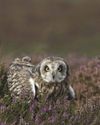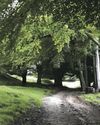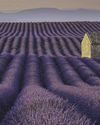
Little egrets are beautiful, snow-white herons with black legs and dandelion-yellow feet. They are water birds of coast and inland wetlands that were once a common feature of Britain’s aquatic world a thousand years ago. Like their cousins, the bittern and grey heron, they make tasty eating and were therefore avidly sought after for the table.
By the Middle Ages they were featured in many a royal banquet, such as that of Henry VI in 1429. However, the writing was on the wall, and numbers in Northern England even then were declining. The lust for egret flesh continued and the little egret rapidly became another British extinction.
Unfortunately, the appetite of humans, particularly in terms of the little egret, didn’t stop there. By the early 17th century a new threat had arisen – the desire for exotic feathers to deck the hats of the Baroque era’s rich and famous. This fad slowly grew into a global craze and by the 19th century the demands of the insatiable Victorian fashionistas were seeing European herons and egrets slaughtered in their millions. In 1887 alone a single London dealer sold two million egret skins.
The slaughter didn’t restrict itself to adult birds either. When they are in breeding plumage egrets have gorgeous, fine, white head feathers, something the Victorians nicknamed ‘osprey plumes’ and which they coveted for their hats. So, it’s easy to see why breeding birds were targeted – birds with nests of eggs or young chicks.
Denne historien er fra March 2020-utgaven av Derbyshire Life.
Start din 7-dagers gratis prøveperiode på Magzter GOLD for å få tilgang til tusenvis av utvalgte premiumhistorier og 9000+ magasiner og aviser.
Allerede abonnent ? Logg på
Denne historien er fra March 2020-utgaven av Derbyshire Life.
Start din 7-dagers gratis prøveperiode på Magzter GOLD for å få tilgang til tusenvis av utvalgte premiumhistorier og 9000+ magasiner og aviser.
Allerede abonnent? Logg på

Can Plants Hear?
In the latest in his series on the intelligence of plants, Martyn Baguley analyses whether they have the ability to hear

Peak National Park and Ride
Andrew Griffihs asks what the future holds for transport in the Peak National Park and talks to Julian Glover about his Landscapes Review

Doubly thankful
Mike Smith explores the village of Bradbourne, which has a particularly poignant tale to tell

What lies beneath
Exploring the hidden depths of Ladybower Reservoir, which conceals secrets of a fascinating past

Battle for our birds
Paul Hobson analyses our complex relationship with birds of prey and how these fascinating birds are fairing in Derbyshire

Explore the Peak Forest
A walk through autumn fields and forests with far reaching views enriched by snippets of mystery, romance and the area’s industrial past

Pictures to transport you
Chesterfield photographer David Keep continues his photographic journey, this time recalling his favourite landscape images from around the world

The magic of Christmas
Ideas for days out, gifts and where to find local produce in Derbyshire this festive season

PENNY for the Guy
We take a look at Derbyshire’s bonfire tradtions through history

From hardship came happiness
Pat Ashworth speaks with Chesterfield based retired Colonel John Doody about his inspiring life, from a diffiult childhood to overcoming diversity and finding happiness